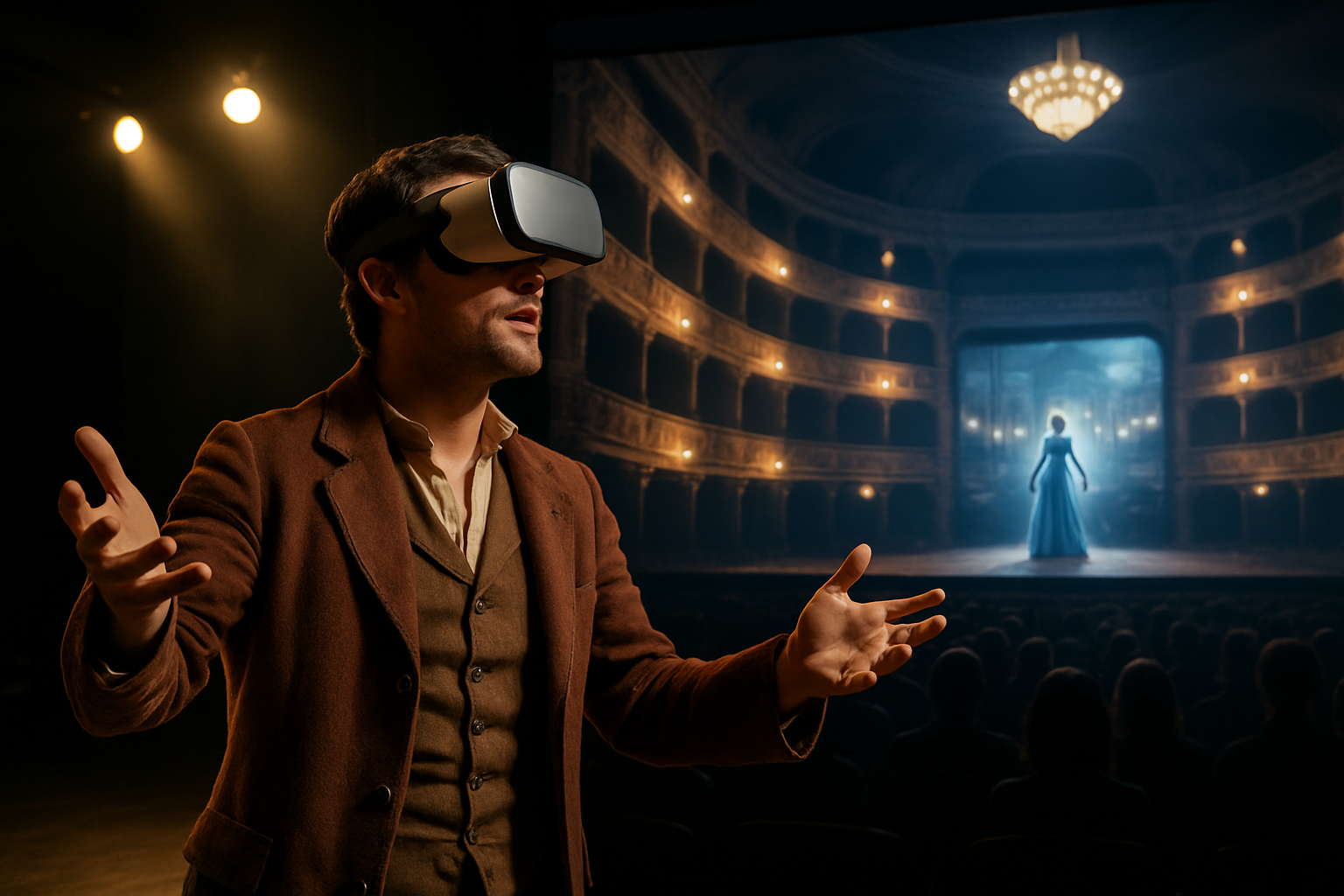Holographic Opera: Revolutionizing the Stage
In the ever-evolving landscape of performing arts, a groundbreaking fusion of technology and classical artistry is captivating audiences worldwide. Holographic opera, a cutting-edge approach to one of the oldest forms of musical theater, is redefining the boundaries of live performance. This innovative technique combines the timeless beauty of operatic voices with state-of-the-art holographic projections, creating an immersive experience that blends the physical and digital realms. As opera houses around the globe embrace this transformative technology, we delve into the phenomenon that's breathing new life into a centuries-old art form.

The first full-scale holographic opera production debuted in 2015 at the Teatro Real in Madrid, Spain. The groundbreaking performance of Mozart’s Don Giovanni featured holographic sets and characters that appeared to materialize and dissolve on stage, leaving audiences and critics alike in awe. This pioneering production set the stage for a wave of innovation that would soon sweep through opera houses worldwide.
Technological Marvels Behind the Curtain
At the heart of holographic opera lies a complex network of cutting-edge technologies. High-powered laser projectors, advanced motion capture systems, and real-time rendering engines work in concert to create the illusion of three-dimensional figures and environments on stage. These systems are so sophisticated that they can respond to the movements and vocal performances of live singers, allowing for dynamic interactions between flesh-and-blood performers and their digital counterparts.
One of the most crucial components is the specially designed holographic scrim – a nearly invisible, ultra-fine mesh screen that serves as the canvas for the projected images. This scrim allows holographic elements to appear solid and vibrant while remaining transparent enough for audiences to see through to the physical set and performers behind it.
Reimagining Classic Works
Holographic technology has opened up new possibilities for reimagining classic operas. Productions that were once limited by the physical constraints of traditional stagecraft can now feature elaborate, fantastical settings that shift and transform in real-time. For example, a recent production of Wagner’s Ring Cycle at the Metropolitan Opera in New York utilized holographic projections to create a vast, ever-changing landscape that spanned from the depths of the Rhine to the heights of Valhalla.
Moreover, holographic opera has allowed for innovative interpretations of character and plot. In a groundbreaking production of Puccini’s Madama Butterfly at the Royal Opera House in London, the titular character’s internal struggle was represented by a holographic doppelganger that shadowed her movements, providing a visual manifestation of her psychological turmoil.
Challenges and Controversies
Despite its transformative potential, holographic opera has not been without its challenges and critics. Some purists argue that the technology detracts from the raw power of the human voice and the intimacy of live performance. There are concerns that the visual spectacle may overshadow the musical and dramatic elements that have long been the cornerstone of operatic art.
Technical difficulties have also posed significant hurdles. The complexity of the systems involved means that glitches and malfunctions can occur, potentially disrupting the flow of a performance. Additionally, the high cost of implementing and maintaining holographic technology has limited its adoption to only the most well-funded opera houses, raising questions about accessibility and equity in the arts.
The Future of Holographic Opera
As the technology continues to evolve and become more refined, the future of holographic opera looks increasingly bright. Opera companies are exploring ways to use the technology not just for visual effects, but to enhance storytelling and emotional connection with audiences. Some are even experimenting with fully virtual productions, where holographic singers perform alongside pre-recorded orchestras, potentially making opera more accessible to audiences in remote locations.
Furthermore, collaborations between opera companies and tech giants are pushing the boundaries of what’s possible. A recent partnership between the San Francisco Opera and a leading Silicon Valley firm has led to the development of AI-powered holographic characters that can improvise and respond to live performers in real-time, opening up exciting possibilities for interactive and adaptive performances.
A New Era for a Timeless Art Form
Holographic opera represents more than just a technological gimmick; it’s a bold reimagining of an art form that has endured for centuries. By embracing cutting-edge technology, opera is finding new ways to captivate audiences and remain relevant in the digital age. While traditionalists may balk at the idea of virtual performers sharing the stage with living, breathing singers, there’s no denying the potential of holographic opera to attract new audiences and inspire fresh interpretations of classic works.
As this technology continues to evolve and become more widely adopted, we can expect to see even more innovative and boundary-pushing productions. The marriage of classical artistry and modern technology in holographic opera is not just preserving a beloved art form – it’s propelling it into an exciting new future. Whether this digital renaissance will become the new standard or remain a niche within the broader operatic world remains to be seen, but one thing is certain: holographic opera is changing the face of live performance and challenging our perceptions of what’s possible on the theatrical stage.





